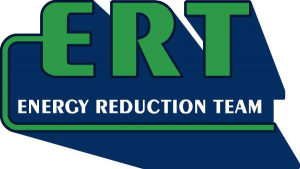Insulating your solid walls could cut your heating costs considerably, because solid walls let through twice as much heat as cavity walls do. The good news is they can be insulated.
If your home was built before 1919, its external walls are probably solid rather than cavity walls. Cavity walls are made of two layers with a small gap or ‘cavity’ between them. Solid walls have no gap, so they let more heat through.
Another way to tell is by measuring the width of the wall. Look at an external wall window or door and if the brick wall is less than 260mm, then it is likely a solid wall, while if it is greater, it is probably a cavity wall. Find out about insulating your cavity wall.
If you live in a house that has a non-traditional construction such as a concrete, steel or timber-framed building, insulating will be different. Find out more from the National Insulation Association.
Solid wall insulation
Solid walls can be insulated – either from the inside or the outside. This will cost more than insulating a standard cavity wall, but the savings on your heating bills will be bigger too.
Costs, savings and financial support
England, Scotland and Wales
| Fuel bill savings (£/year) | Carbon dioxide savings (kgCO2/year) | |
| Detached | £425 | 1,870 kg |
| Semi detached | £255 | 1,120 kg |
| Mid terrace | £160 | 690 kg |
| Bungalow | £175 | 760 kg |
| Flat | £120 | 520 kg |
Typical installation costs*
- External wall insulation: £8,000 to £22,000
- Internal wall insulation: £4,000 to £13,000
*Estimates based on insulating a gas-heated home. Costs may vary significantly depending on level of work required. Above estimates are based on a typical install, ranging between a small flat and a large detached home. Figures are based on fuel prices as of May 2017.
Northern Ireland
| Fuel bill savings (£/year) | Carbon dioxide savings (kgCO2/year) | |
| Detached | £360 | 2300 kg |
| Semi detached | £215 | 1,370 kg |
| Mid terrace | £135 | 850 kg |
| Bungalow | £145 | 930 kg |
| Flat | £100 | 640 kg |
Carbon dioxide savings (kgCO2/year) Typical installation costs*
- External wall insulation: £8,000 to £22,000
- Internal wall insulation: £4,000 to £13,000
You might be able to reduce these costs by carrying out the work at the same time as other home improvements or by not tackling the whole house at once.
Keeping the costs of installing solid wall insulation down
The costs we reference for installing solid wall insulation are for paying a company to come in, insulate your whole house in one go, fully redecorate and replace everything just as it was. Some people want exactly this, but it does cost a lot of money. If you’re looking to spend less, it is advisable to insulate a wall when you are having other building or decorating work done. Fitting the insulation work in with your other home improvements not only saves money on the job, it also spreads the cost of the insulation as you improve your home’s rooms.
External insulation will also cost less if you do it when you’re having other work done to the outside. If you’re having a new roof, or painting the windows, or even having solar PV panels fitted, then you will probably have scaffolding up already, which can save a bit on the costs. If you have rendered walls with damaged render, or brick walls that need re-pointing, external insulation may not cost you much more than you would need to pay for the repairs.
Internal wall insulation is done by fitting rigid insulation boards to the wall, or by building a stud wall filled in with insulation material such as mineral wool fibre.
Internal wall insulation:
Is generally cheaper to install than external wall insulation will slightly reduce the floor area of any rooms in which it is applied (the thickness of the insulation is around 100mm) is disruptive, but can be done room by room requires skirting boards, door frames and external fittings to be removed and reattached can make it hard to fix heavy items to inside walls – although special fixings are available needs any problems with penetrating or rising damp to be fixed first.
Moisture movement and ventilation
In traditionally built properties with solid walls, it is recommended to use breathable (also known as vapour permeable) solid wall insulation materials as these allow continuous movement of air (vapour) and this helps reduce the possibility of moisture build up.
If you are planning on installing non-breathable (also known as vapour impermeable) solid wall insulation materials in a traditionally built property then we recommend you ask the installer what consideration needs to be given, if anything, to avoid the build-up of moisture in your home.
Remember to check with your installer that the installation is covered by the SWIGA guarantee which gives 25 years cover for defective materials, design or workmanship or by other appropriate guarantees such as Kinnell ECO Guarantee (which covers most of natural building technologies). Also check with your installer that the products/materials are BBA certified.



